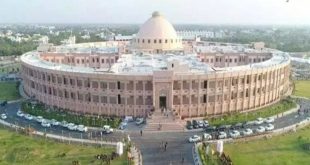
History of Mangalsutra : Prime Minister Narendra Modi recently mentioned Mangalsutra in an election rally in Banswara, Rajasthan and targeted Congress, saying that they will hand over people's hard-earned money and property to infiltrators. The ideas of Congress are like urban Naxal. My mothers and sisters, they will not even leave your mangalsutra. After this statement of the Prime Minister, Mangalsutra has become a topic of much discussion. Mangalsutra is, in a way, the voice of our Indian society, because Mangalsutra is the most important integral part of our life, more than tilak and kanthi-mala. If you look from North to South you will find Mangalsutra around the neck of all married Hindu women. This Mangalsutra is also the symbol of marriage of Hindu women. In Hindu religion, after marriage, Mangalsutra around the neck and vermillion on the head are of great importance for women. Mangalsutra is considered to be the protective shield of husband and wife but why women wear Mangalsutra after marriage, it also has a different history and apart from India, women wear Mangalsutra in many countries.
Meaning of Mangalsutra?
Mangalsutra is made up of two words Mangal and Sutra. 'Mangal' means sacred and 'Sutra' means sacred necklace. In Hindu religion, Mangalsutra is considered the biggest symbol of married life. However, its form also varies in different areas. At some places, gold, white or red beads are also added to the mangalsutra. Apart from Hindus in India, Nepal, Bangladesh and Pakistan, non-Hindus such as Syrian Christians also wear Mangalsutra.
The tradition of wearing mangalsutra started in the sixth century
The history of Mangalsutra is also found in Adi Guru Shankaracharya's book 'Soundarya Lahari'. According to historians, the tradition of wearing Mangalsutra started in the sixth century. Evidence of Mangalsutra has also been found in the excavation of Mohenjodaro. Wearing Mangalsutra first started in South India. After this, gradually this practice became popular not only in India but also in other countries. According to the information, in Tamil Nadu Mangalsutra is called Thali or Thiru Mangalyam. Whereas in North India it is called Mangalsutra.
Pandavas gave various ornaments to Draupadi
It is mentioned in the Mahabharata that the five Pandavas gave different jewelery to Draupadi while marrying her. It includes Karna Phool (earrings), necklace, bracelet, Maniband (waist garland) and Mundari (ring). Similarly, when Shri Krishna abducted Rukmini and married her, he accepted Rukmini by garlanding her with flowers.
Folktales of Shiva-Parvati related to Mangalsutra
Both the pendants of Mangalsutra are considered to be the form of Shiva-Parvati, according to Manati Purana folklore in Telugu, when Shiva married Parvati, he remembered his previous birth. Then Shiva felt sad that if Sati had not gone to her father's Daksha Yagya, she would not have been burnt to ashes and secondly, if I had been there, perhaps such a bad situation would not have arisen… Then Lord Shiva, in the sutra, with halter and sandalwood. His power tied it and put it around Parvatiji's neck. Hence its place has become very important in Telugu marriage tradition.
Mangalsutra is worn for the long life of the husband.
However, there are many communities in India where mangalsutra is not worn. Other marital symbols are worn in its place. In large parts of North India, married women wear Khijra, glass bangles and necklaces around their necks. According to Hindu tradition, Mangalsutra is worn for the long life of the husband.
Time to take off the mangalsutra?
In ancient times, bridal jewelery also served as financial security in case of old age and widowhood. Dr. Balakrishnan and Meera Sushil Kumar, in their book 'Indian Jewellery: The Dance of the Peacock', write that, historically in India, jewelery was an auspicious symbol of married life. Only when the woman became a widow did she remove the mangalsutra. It is written in a book of Atharvaveda that, the bride's father solemnized the marriage by saying that I hand over this bride adorned with gold ornaments to you. That is, Mangalsutra is considered sacred.
Mangalsutra beliefs
Different regions have their own beliefs regarding Mangalsutra. It is believed that the black pearl present in it is the form of Lord Shiva and the gold is related to Mother Parvati. It is believed that Mangalsutra contains nine pearls. These represent nine forms of Maa Durga. These nine pearls are also considered symbols of earth, water, air and fire. Mangalsutra is one of the 16 adornments of women.
 look news india
look news india

